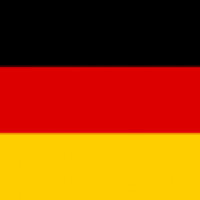Summary:
The research group offers multiphysical simulations to support partners in industry and academia during the development or improvement process of green technologies. The group is headed by a physics professor at an Institute of Technology located in Southern Germany.
To acquire a better understanding, computer simulations provide many advantages and unique possibilities compared to experimental methods. Thus, the group is looking for partners in a research cooperation agreement.
Description:
The world around us is determined by the laws of physics which are typically described by partial differential equations (PDEs). However, current problems in academia and industry are often too complex to be solved analytically. Numerical simulations are the method of choice: the questions are formulated as a numerical model and the PDEs can be solved approximately. A well-established numerical technique to solve these equations is the Finite Element Method (FEM). Additionally, in many applications, considering only one physical aspect is not enough. More equations - corresponding to two or more physical regimes - need to be solved in a coupled manner. This is what makes up "multiphysical simulation" and defines our area of expertise.
The research group offers modelling skills for project partners to overcome technical problems in their R&D process of green technologies. If real-world problems are considered, different physical phenomena mutually affect one another, making a multiphysical approach necessary. The research group uses commercially available FEM software as well as open source software to tackle the tasks posed by the project partners. Beginning with an intensive meeting – if possible face-to-face - a prosperous course of action is the following:
• In the first place, the involved physical phenomena are identified to decide which PDEs need to be included in the model. Also it is determined whether a stationary or time-dependent approach is required. This both affects how computationally hard the problem will be.
• Subsequently, a basic understanding of the model geometry is achieved with engineering drawings and / or laboratory visits. For maximum efficiency, symmetries as well as neglectable design elements are omitted to gain an abstract model of the system that includes only the relevant features.
• The numerically necessary discretization of the system will be handled. Here again, the objective is “as fine as necessary and as course as possible” with a focus on the technically most relevant spots.
• In order to build a reliable model, the intermediate and final results of certain parameters need to be compared with experimentally or theoretically accessible data. This validation step is crucial for all conclusions drawn from the results of the simulation.
• The parameters of specific interest to the project partners are defined at the beginning of the simulation. Typically, in the end these parameters are varied to achieve the goal of the project, i.e. optimize some property of the product.
Besides the simulative expertise, each group member is an experienced experimental physicist. The team is always interested in conducting accompanying experiments in the laboratories at an Institute of Technology or at the R&D laboratories of the project partner. This combination of simulative and experimental expertise is beneficial for the validation of the simulation model. Besides the technical aspects, some project managing can be provided by the group.
Over the last 7 years, the research group used their multiphysical simulation tools successfully in several cooperation projects with partners from industry and academia to solve technical problems in the development process of green technologies.
Type (e.g. company, R&D institution…), field of industry and Role of Partner Sought:
The research group searches for multiple partners in industry and academia who are involved in the development and optimization of green technologies. The role of the cooperation partner in this agreement is the formulation of the technical challenge and the provision of measurement data to validate the simulation model.
Stage of Development:
Already on the market
Comments Regarding Stage of Development:
The group uses methods (multiphysical numerical simulations) which are already on the market or available via open source projects. However, the green technologies to which these methods are applied are not constrained: They depend on the cooperation partners the group is looking for right now.
IPR Status:
Secret Know-how,Design Rights,Patent(s) applied for but not yet granted,Patents granted,Granted patent or patent application essential,Trade Marks,Exclusive Rights,Copyright,Other
External code:
TODE20211119001








